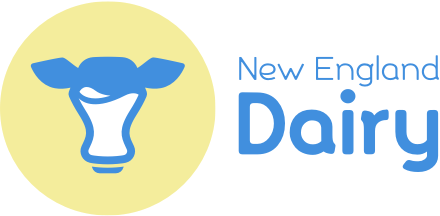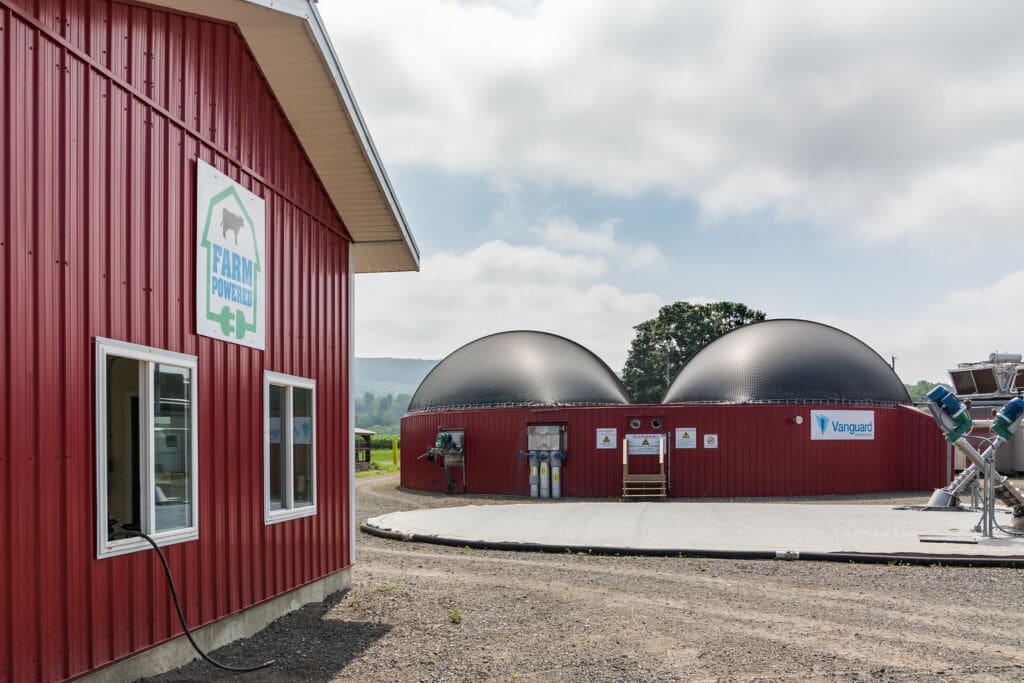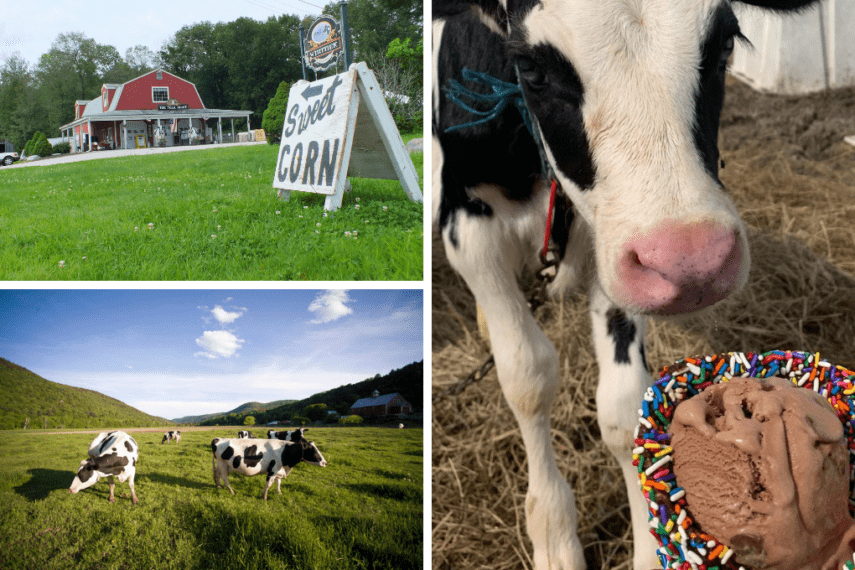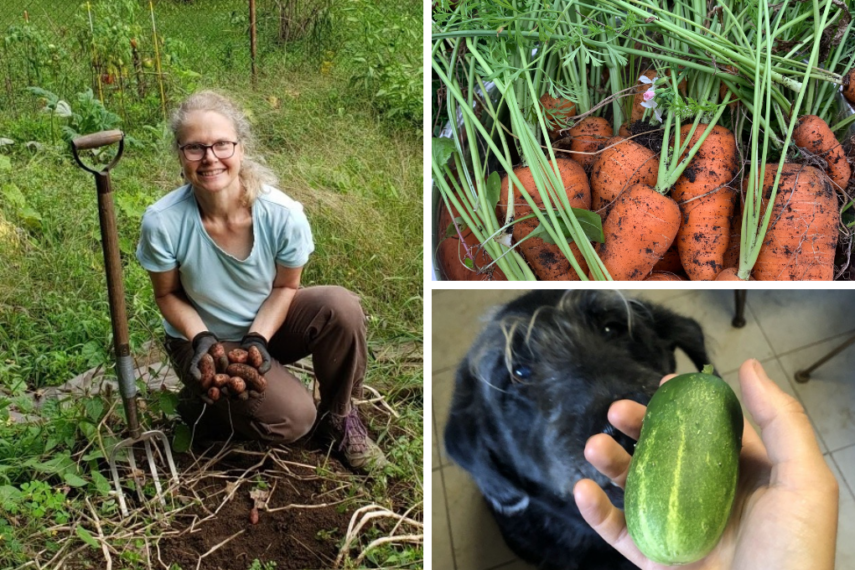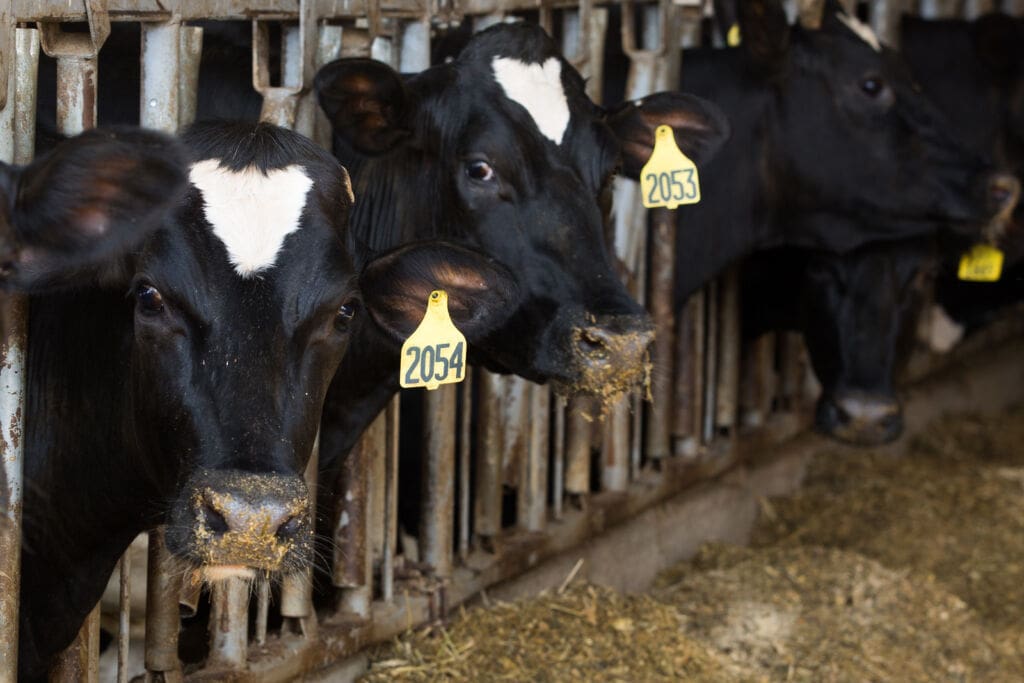
Cows take a lot of the heat when it comes to greenhouse gas emissions. But are they heating up the planet as much as films like Cowspiracy would like us to believe?
At our dairy farm, I’ve been working to reduce methane emissions nearly my entire life. I can tell you it’s not a black and white issue (or a brown and white one, depending on your breed of cow). Here’s how sustainable farming works at our fifth-generation, 600-acre dairy farm in Deerfield, Massachusetts.
Cows make a lot of milk and a lot of manure; both are important to us. We make about 2,500 gallons of milk a day to feed our local communities. It travels on average 48 hours from farm to store. Each of our cows also creates about 80 pounds of manure a day. We reduce greenhouse gas emissions by turning methane from manure into renewable natural gas (RNG).
How Greenhouse Gas from Cows is Captured
It starts when methane goes through a process known as anaerobic digestion. Microorganisms break down the cow manure in a large bubble-shaped dome known as the digester. As a result, trapped gases are refined into RNG, a biogas. The RNG goes into natural gas pipelines to make electricity to heat buildings or fuel vehicles.
We installed our 660,000-gallon capacity anaerobic digester in 2016. It turns approximately 20 tons of manure daily into electricity, heat, and fertilizer.
The leftover liquid from the manure is a natural fertilizer for our fields (replacing the need for synthetic fertilizer). The leftover plant fibers make sterile bedding for the cows.
The digester also acts as an innovative solution for food waste. Restaurants and grocery stores send scraps and expired products to our digester instead of landfills. It’s illegal to put food scraps in landfills in Massachusetts. We help convert that waste into sustainable energy along with manure.
Each year, our farm offsets more than 2 million pounds of CO2 emissions, and powers the equivalent of 1,600 homes. The energy produced reduces the farm’s utility bill and is also sold for local use. In New England, at least 25 farms turn manure into power, according to the EPA anaerobic digester database.
Cow power is one avenue toward a sustainable future while also providing an economic boost for farms.
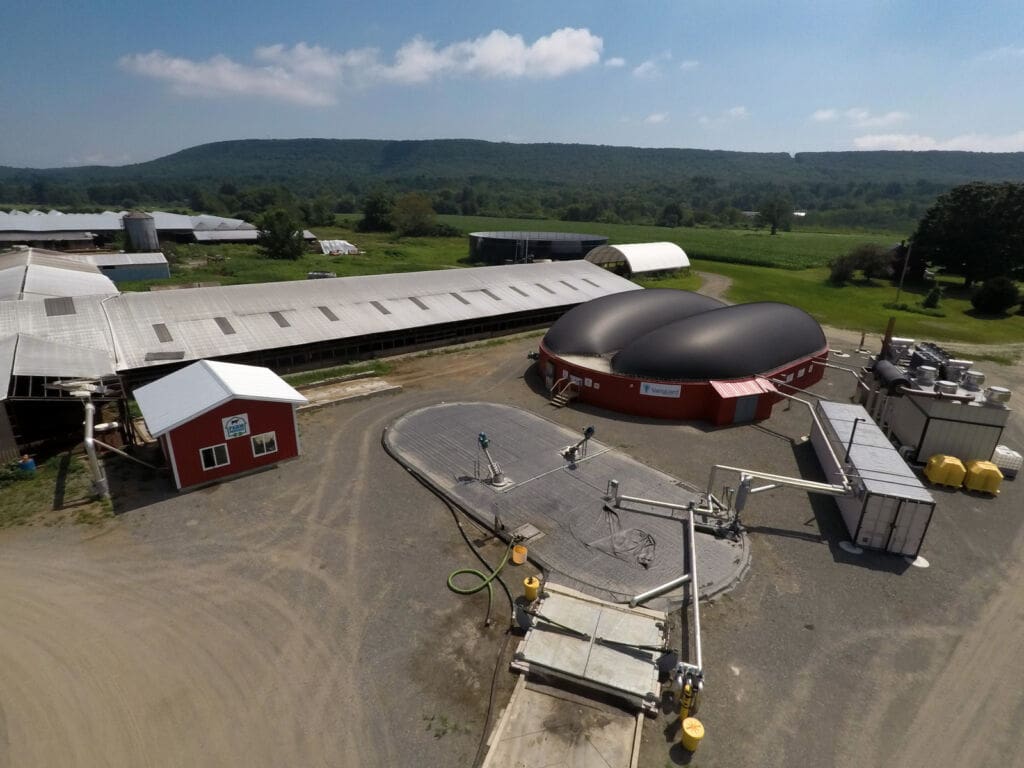
Photo credit: Vanguard Renewables
Sustainable Farming to be Carbon Neutral or Better
Massachusetts set a statewide goal to reduce greenhouse gas emissions by 80% by 2050. The U.S. dairy industry set an even more aggressive goal to be carbon neutral or better by 2050 through an effort called the Net Zero Initiative. Currently, U.S. agriculture (plants and animals) makes up 10% of the nation’s total greenhouse gas emissions – about 2% comes from dairy cows.
Anaerobic digesters serve as a viable replacement for fossil fuels and have an important role to play in reducing the carbon footprint of the dairy industry (and of humans overall). In the below video, Dr. Frank Mitloehner, Air Quality Specialist from UC Davis, explains how the greenhouse gas emissions from burning fossil fuels differ from those produced by livestock.
Dairy farmers are reducing their carbon footprint in other ways too, including through solar power, wind power, cover crops, and no-till planting. As our society works to reduce our impact on the planet, farmers will be a critical part of the solution.
Everyone needs to eat, and every food has an environmental impact. Dairy farmers are dedicated to feeding people in the most environmentally friendly way possible.
